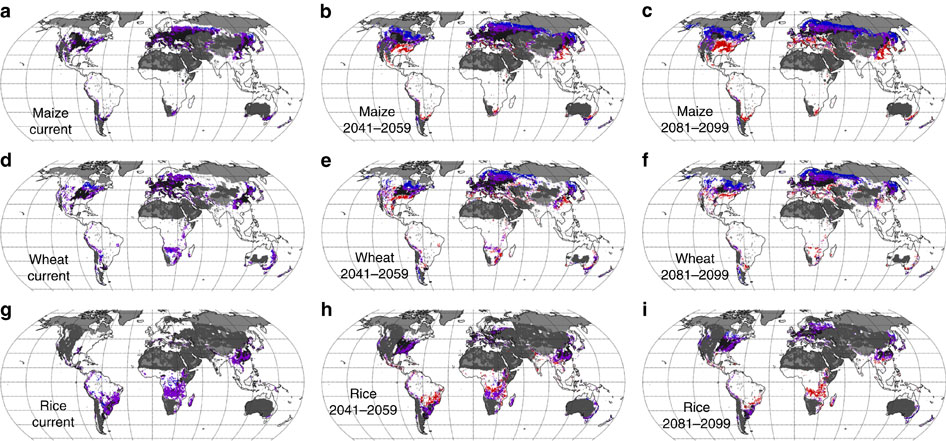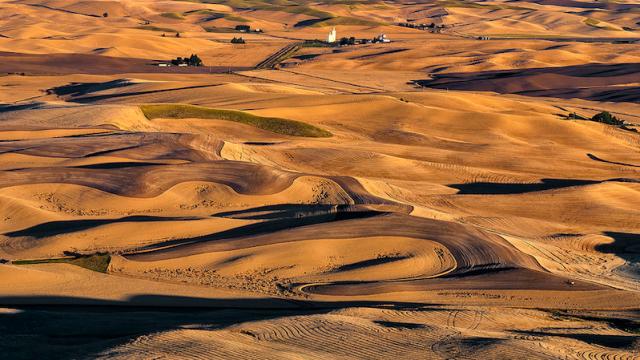A relatively small number of crops make up a lot of the world’s diet. But, as the world gets hotter, the places that we’re able to grow these crops are moving.
Wheat harvest in the Palouse (Image: Charles Knowles)
A new study published in Nature Communications by researchers at the University of Birmingham looks into whether the places where we currently grow our staple crops — corn, wheat and rice — will be able to keep growing these things into the next century. Given our steadily growing population, it’s not enough to merely keep up, though. We have to keep increasing the quantity of food we produce.
So far, we’ve done a pretty good job of keeping pace with the increasing demand for food. The US alone has doubled the amount of food it grows in the last 60 years — and it did so despite using less farmland than it used to. But as the world gets hotter, the researchers found that the farm belts where stable crops grow are going to dry up or move to radically new locations.

Image: Nature Communications
The eastern US, which grows much of the world’s corn and wheat, is going to be hit hard over this century. Europe, Sub-Saharan Africa and parts of South America are also going to see falling crop yields. In the world’s northern latitudes, however, there is actually going to be a bump in production, as hotter temperatures either increase yields or make it possible to grow crops in areas where it was previously too cold. The researchers predicted that both central Russia and Canada would see significant gains.
The rise of new agricultural regions, however, doesn’t exactly make up for the loss of others. Though temperature trends suggest that crop production in Canada and Russia could pick up, there’s a lot more than just temperature that go into building a successful farm belt. Working farms also require machinery, water, excellent pest management and farmers with experience in both the area and the crops to run them. Building that up in new locations is going to take time and considerable resources.
It’s possible that the areas currently growing staple crops could also find ways to increase growth despite hotter temperatures — with new varieties of corn and wheat, for instance — to help make up for the coming shortfall. Certainly, in the hotter and more crowded world of the future, we’re going to need all the food we can get.
